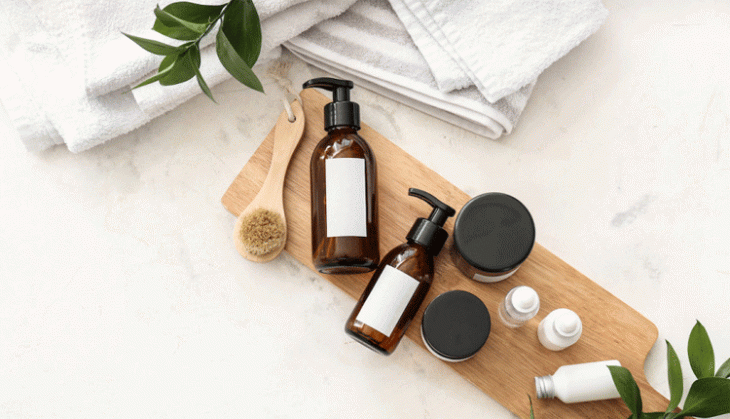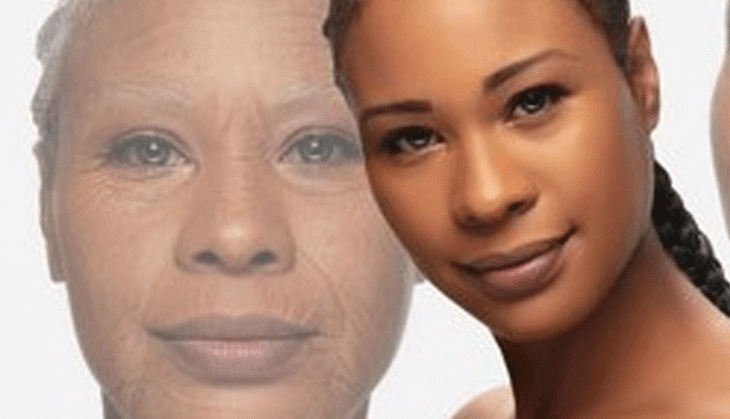Age gracefully: Do you apply the right skincare regimen for your age?

Do you apply the right skincare regimen for your age? ANNA MWIKALI sought expert tips on skincare regimen for different age groups.
Ever stood at a supermarket aisle, confronted by a myriad skincare products, and you don’t know what the heck to go for?
From day and night creams, moisturisers, sunscreens, facial scrubs, face serums, face masks, cleansers… and the list goes on.
When it comes to skincare, most of us fall into two categories. There are those of us whose only skincare routine involves washing the face and layering the famous (or infamous) Arimi’s petroleum jelly.
Then there’s the other camp that embraces Botox and chemical peels before their first wrinkle pops up.
Dr Salome Kivanguli Muravvej, a dermatologist at Allure Laser, Skin and Aesthetic Medicine Centre, points out that collagen starts to break down as early as the mid-20s, and after the age of 20, one per cent less collagen is produced in the dermis each year.
So, what worked for you in your 20s won’t do you any favour in your 30s or 40s.
For a youthful, dewy glow well into your golden age and skin radiance every decade in between, we need to adjust our skincare regimen to the number of candles on our birthday cake.
Dr Muravvej has got the lowdown on the skincare products you should be using in your 20s, 30s, 40s, 50s and well into your senior years.
Here is how to put your best face forward in every age group.
In your 20s: Prevent and protect
The skin is peaking in your 20s, with strong collagen production and a lot of elastin, so it is plump, self-renewing and firm.
You might still be dealing with teenage acne. Continue the acne meds and see a dermatologist if you hadn’t before.

Use oil-free or non-comedogenic products, as well as products with ingredients such as salicylic acid and benzoyl peroxide.
However, hard-living comes with its consequences, so fine lines can start to creep up in the latter years of your 20s.
To keep them at bay and impede your skin’s misdemeanour, it’s important to begin a daily skincare routine that involves using sunscreen.
Dr Muravvej advises going for SPF30 and above, that protects against at least 97 per cent of UV rays.
“Apply the sunscreen not only on your face, but also on your neck, décolletage and the back of your hands, which are the easiest places to tell ageing and the most affected by the sun.
Your desired regimen:
Use a gentle foaming cleanser at night to remove make-up and excess oil without drying out the skin. Follow with a basic light moisturiser.
Use a light moisturiser during the day that contains sunscreen with UVA and UVB protection.
The skin expert recommends looking for a product that contains zinc oxide or titanium dioxide.
If you get a mild breakout, use a spot treatment containing benzoyl peroxide or salicylic acid.
In your 30s: Glow up
Three of your biggest skin villains at this age bracket are fine lines, hyperpigmentation and loss of skin elasticity.
Slower skin cell turnover in this age also leads to dull-looking skin. So, regular exfoliation would help.
Your desired regimen:
At this point, you need a more robust cleanser than the one you used in your 20s.
“I advocate for a formula that removes make-up and gently exfoliates using PHAs (gluconolactone and maltobionic acid), and decreases inflammation,” Dr Muravvej says.
The skin around the eyes is delicate and more prone to damage. So, use eye cream in the morning and at night to hydrate the skin, boost suppleness and reduce visible lines.
Before applying sunscreen during the day, use an antioxidant-rich moisturiser or serum.
Incorporate a retinoid into your skincare routine to help elevate the overall texture and tone of your skin.
The most highly effective retinoids are prescription-only, however, over-the-counter retinol is second best.
Retinoids are ideal for night use because sunlight deactivates their formula, making them useless.
Moreover, add an alpha hydroxy acid (AHA) product into your regimen twice or thrice a week. It helps prevent the build-up of dead skin cells and minimizes pores.
In your 40s: Moisture mania
They say life begins at 40, but your skin doesn’t always get the memo. Blame your dwindling oestrogen levels that make your skin dryer and less bouncy.
“The collagen and elastin fibres break, thicken, clump together and lose their elasticity, causing wrinkles,” says Dr Muravvej. Generally, you’ll need to include moisture and collagen-restoring ingredients such as peptides.
Your desired regimen:
Use a non-foaming, moisturising cleanser in combination with a gentle exfoliating brush to help get rid of any flaking skin before you apply the retinol.
Don’t forget to use SPF every day to further prevent skin damage. Choose SPF that contains antioxidants to ward off free radicals and help reverse some of the current damage.
Peptides and retinoids should take a front seat if you haven’t been using them.
Peptides stimulate collagen production, while retinoids have anti-ageing properties and prevent sagging. They also reduce acne.
Finally, use a moisturiser that has a high level of hyaluronic acid or glycerine to aid in skin moisture retention.
In your 50s: Get firming
This is the decade where the consequences of earlier lifestyle choices reveal themselves.
Skin elasticity and collagen degrades further and causes smile lines, loose skin, turkey neck, more wrinkles and blotchiness.
Thanks, menopause! But these might be less if you were diligent with sunscreen when you were younger.
There is bone loss around the jaw, which causes jowls, accompanied by fat loss, which can create a sunken look.
Your desired regimen:
You need rich moisturisers that can replenish your skin’s lipid content, containing ceramides, cholesterol and free fatty acids.
Apply a retinoid before your moisturiser at night. And your moisturiser should include phytoestrogens to reduce hormonal ageing.
Petroleum jelly helps to lock in moisture from your moisturiser, which is crucial at this stage.
Use 10%-15% concentrations of glycolic acid to help increase the absorption of retinoids.
Get your dermatologist to prescribe anti-hyperpigmentation creams for melasma and hyperpigmentation. Over-the-counter options that contain kojic acid are close seconds.
Again, don’t neglect your neck, décolletage and the back of your hands.
In your 60s+: Timeless beauty
At this age, your skin is less likely to give you any bigger surprises. Now is the time to perpetuate that ageless skin texture you’ve worked tirelessly for.
Your main concerns are dealing with the loss of skin elasticity, keeping up with hydration and losing pigmentation.
Your desired regimen:
Peptides should still be part of your regimen. They communicate with skin cells, creating the illusion that they are younger.
Keep up the antioxidant serums to prevent and get rid of pigmentation.
Use sunscreen religiously 365 days a year, as well as physical sunlight protective measures such as wearing hats.
Apply retinol only a few times a week as it can accelerate dryness, and combine it with a niacinamide product.
Niacinamide (Vitamin B3) boosts your skin’s barrier so that it retains moisture.












